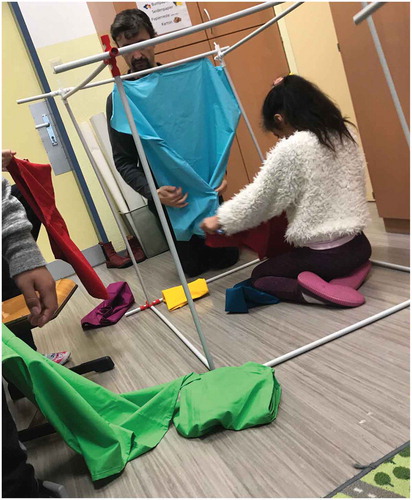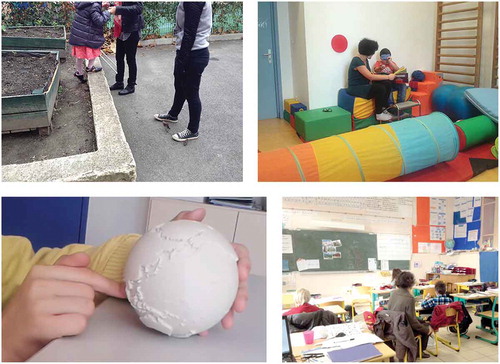Figures & data
Figure 1. Interacting with one prototypes within social play technologies, one child coming at it with stern curiosity, one with perky interest and another one calmly investigating.

Figure 2. Creative engagements on the object with one design research attending to a specific child, some creating independently and the other design researcher quickly shifting between taking a picture and tentatively attending to the group.

Figure 3. In the Mapsense project, design activities were embedded within the normal delivery of educational services. These pictures illustrate various challenges encountered: the top right and left picture show how close physically to the pupils educators and teachers need to be in different activities. The same might go for the designer. Bottom left picture is of the tactile globe probe which proved challenging to deploy as educators used it as a teaching opportunity that ultimately caused the pupil to disengage. Finally, the bottom right photo depicts a classroom context, in which a special education teacher sits by one of our participant, further illustrating issues of negotiating with adult gatekeepers. The case study on confidentiality is not illustrated, due to its very nature.

Table 1. Tensions between ethical principles stemming from virtue ethics and strategies used in micro-ethics.
